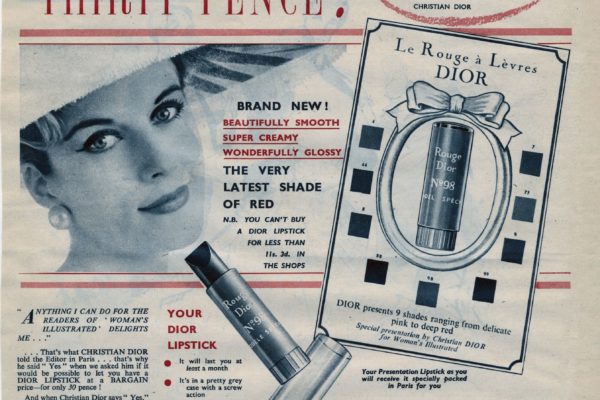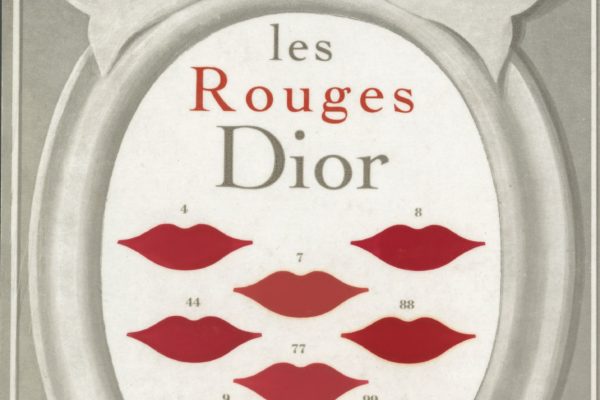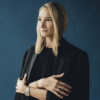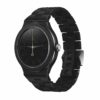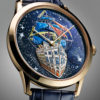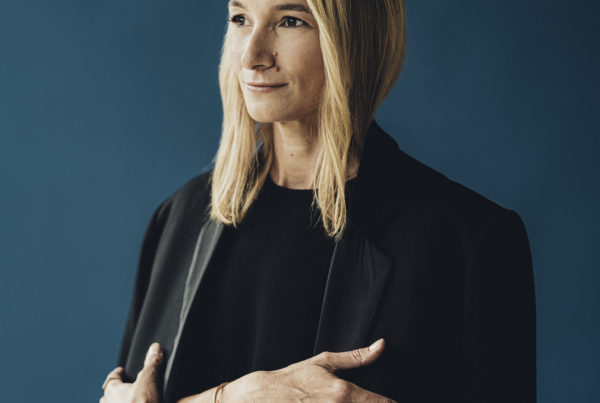Seventy shades of red
Rouge Dior was the first make-up product created by Christian Dior in 1953. To celebrate the 70th anniversary of this iconic product, Peter Philips, Creative and Image Director of Dior Make-up, has revisited it, creating no fewer than 70 shades. Interview: Isabelle Cerboneschi
A lipstick is a lovely paradox: it’s a tiny object with big effects. It adds an accent of colour to a face, redirecting the gaze of the interlocutor towards the mouth, the power of a word or a kiss. Rouge Dior was the first make-up product created by Christian Dior in 1953. To celebrate the 70th anniversary of this iconic product, Peter Philips, Creative and Image Director for Dior Make-up, has revamped it, conceiving no fewer than 70 shades.
Peter Philips has been creating Dior’s make-up lines for ten years, offering women beauty alternatives. A graduate of the Antwerp Academy of Fine Arts, he has a knack for introducing colours from other fields into make-up palettes: the world of flowers, interior decoration, and the fabrics of Monsieur Dior’s haute couture collections. He is an outstanding colourist and his palettes are jewels.
Rouge Dior’s new clean formula is infused with a unique floral extract of red peony and a combination of floral ingredients for optimum comfort. Its promises? To ensure hydrated, comfortable lips and enhance their beauty after each use, with long-lasting colour.
The shades have been chosen to meet the needs and desires of women from every region of the world, every culture and every skin tone. How can an iconic beauty object evolve? Interview.
INTERVIEW
How do you reinvent an iconic lipstick?
Peter Philips : It’s an ongoing process. To create the new Rouge Dior we had to rethink our perception of colour and the way women wear make-up. It wasn’t just a journey through the archives, although they are a key source of inspiration: we were inspired by women, how they perceive their beauty and how they want to express it.
You created 70 shades for this new Rouge Dior, using tones and undertones just like a painter would. How did you achieve this result?
After the Covid epidemic, we saw a change in the world of make-up. Women had to wear masks for a while, without being able to wear lipstick, and they discovered a new approach to beauty: make-up that also worked as skincare. As for the shades, I wanted to understand how women perceive the colour ‘nude’. When we talk about nude, we often think of a pretty beige. But when I do make-up, and I do make-up for women of all ages, skin tones and cultures, I know that beige is not nude for everyone. When our marketing teams launch a new foundation, we study in depth the needs of women depending on the region where they live, the climate, their culture. We ask ourselves whether they want make-up that enhances their complexion or camouflages and corrects their skin colour. But we’ve never carried out this kind of study on lipstick!
What kind of research did you carry out to create this collection?
I asked for a survey to understand the expectations of women living in the United States, Asia, South America, Europe, the Middle East… What do they expect from a lipstick? We asked 400 women from all over the world what their two favorite lipsticks were, and what their expectations were. We learned a lot about how women perceive color. It reinforced my view that it’s not beige. It could be a calm red, a rosewood, a coral… The results put our range of 70 shades into perspective. It doesn’t include any violent colors. They’re soft, gentle tones that aren’t intimidating. We have fulfilled the desires of women all over the world.
We’ve all seen this legendary product in our mothers’ or grandmothers’ bathrooms. Do you have any special memories of Rouge Dior?
Yes, like everyone else. All I can remember is the smell. A rose perfume. On Sundays, or on special occasions, my grandmother would do her make-up and put a pearly pink on her lips, a bit 60s, with blue-grey on her eyes and mascara. It gave her a certain allure. Her lipstick was metallic. I remember the sound too: that particular click. I loved watching my mother and grandmother doing their make-up.
What does the new Rouge Dior bring to the world of beauty?
It offers the best of what you’d expect from a lipstick. There’s the packaging, with its refill concept, its clean formula and an inviting range of shades. It’s a lipstick that keeps its promises. A woman will rediscover the power of a lipstick, the pleasure of applying it, the comfort and the effect. It enhances individual personality and beauty. It’s a small, accessible object, a tool of power.
Where did the idea of using floral science to create the formula for this new opus come from?
“In our products, we use the beauty of the flower and its soul.”
Christian Dior was passionately fond of flowers and this source of inspiration is revisited each time with the laboratories. Initially, the inspiration was purely aesthetic, but over the years they have analysed the virtues of floral waters and essential oils, and discovered elements in certain flowers that are relevant to skincare. In our products, we use the beauty of the flower and its soul.
What was the greatest difficulty in designing a formula that was clean, had high coverage, was long-lasting, moisturising and comfortable – a kind of aesthetic grail?
I don’t know the formulas because I’m not a chemist. The magic happens in the laboratory. When I create shades, I ask for a certain colour with a certain finish, transparency, and coverage. I know that it’s a complex process, that it’s going to require a lot of trials, and I test them all. Sometimes the colour is good but not the coverage, sometimes the coverage is great but the shade is too transparent, or there’s too much skincare. There are a lot of stages before you find the right formula. And each time we have to adapt it to the different colours. A Dior lipstick never lets you down.
Why did you create the matte texture of Rouge Dior Velvet with a pattern that looks like a fishnet?
It’s to visually show the result of the make-up. We tried to recreate a fabric-like effect. When the Velvet formula comes out of the laboratory, visually you can’t see how it’s different from a satin formula. It’s only when you apply it to the skin that you see the difference. We chose this effect for practical reasons.
The lipstick Dior 720 Icone, which you created years ago, is a rosewood colour. Was this shade inspired by a Christian Dior dress?
Before launching 720, which is a classic and a beautiful shade that suits many women, I did some research in the archives. We analysed a whole collection of red, pink and coral garments with the people in charge of the archives. When we opened the boxes, it was fascinating to see how the colour of a fabric can change over time. Take a pleat, for example: the shade may have faded a little, but when you look inside the pleat you discover its original colour. It’s the same with the interior of a dress that hasn’t been exposed to light. You can see all the nuances of the same fabric colour: opaque, slightly washed reds, for example, whereas the original fabric is sparkling. This archive research enabled us to create an entire collection, including the 720.
Red 999 is a Dior icon. Do you think it’s the perfect red?
I wouldn’t say it’s THE perfect red, but it is perfect. We’ve created other beautiful reds, even in limited editions. Last week I was on a photoshoot with the Dior team and the manicurist had a little case with several reds. We chose a magnificent shade, one that came out five years ago and whose name I can’t remember. I’d forgotten it, but for the manicurist it was the perfect red. But 999 is special: it’s lived a pretty life for a long time and it’s beautiful in different finishes. I’ve created it in transparent, glittery, glossy, satin, velvet and matte versions, and it works in all textures and on all mouths. It’s a red that speaks. It’s not shy. It’s bold. It’s a perfect red and he’s not the only one.
Do you think a lipstick can change a woman’s mood in the same way as a garment behind which she invents the character she wants to play?
“The moment you apply lipstick, it changes your opinion of yourself and your attitude. I think it’s a form of empowerment”
I’m convinced of it. On the catwalk, when I put make-up on a young model who’s not used to wearing lipstick, and I give her a pretty red mouth, all of a sudden her attitude changes. So does the way she talks, drinks and eats. She sees herself in the mirror and discovers another dimension of her femininity. The moment you apply lipstick, it changes your opinion of yourself and your attitude. I think it’s a form of empowerment.


















